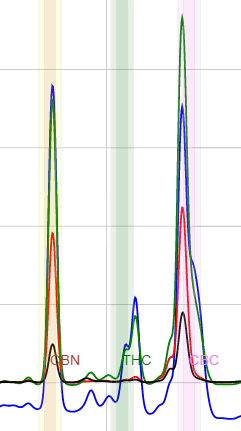Slowly but surely, as cannabis becomes legal again in states across the US and in countries across the world, scientists are beginning to delve back into researching cannabis. Research grants are becoming more available as interest grows in the biomedical benefits of the plant, and accordingly more research papers are being published and peer-reviewed.
One paper that caught our collective eye here at the lab is Phytocannabinoids: a unified critical inventory (Hanuš/Meyer/Muñoz/Taglialatela-Scafati/Appendino, Oct 2016). This meta-study offers a comprehensive review of the state of research into plant-made cannabinoids from not just cannabis but from other higher plants (such as rhododendrons), liverworts and even fungi. Much of the characterization of the various cannabinoid chemotypes was done in the 60’s and 70’s, but in the intervening years new structural types have been discovered. In addition, many studies preceded the identification of cannabinoid receptors in the 90’s, and subsequent studies did very little bioactivity evaluation beyond CB1 activation. As a consequence, many knowledge gaps remain to be filled.
Of particular interest to us are the notes and insights regarding the chemical interconversions of cannabinoids. A vast array of cannabis products passes through our instrumentation, and we regularly see likely conversion and degradation of cannabinoids, especially in extracted and distilled products (see FIGURE 1). Most cannabis extraction methods use heat and/or pressure to achieve their desired results, and there is great interest in fine-tuning extraction parameters to maximize the yield of useful cannabinoids and reduce degradation. While this paper does not directly address those issues, the collation of relevant research remains highly valuable – not only for our own work in accurately assaying our sample population, but also for the chemically-savvy extraction operator who may be looking a particular cannabinoid or group of cannabinoids.
It is gratifying to observe cannabis research return to mainstream science, and to see publications like this making their way into the literature. As the knowledge base grows, we will continue to share notable papers such as this with you, our readers. We encourage you to share in return – the more knowledge that is brought into the open, the more difficult it becomes to hide it away again.

FIGURE 1: On the left, we see a well-formed peak eluting in the CBN range. In the THC range in the center, there appears to be at least two compounds co-eluting (possibly the Δ8 and Δ9 THC isomers). On the right, around the CBC range, we see a jumbled mass of malformed peaks, which is typical of degradation.

